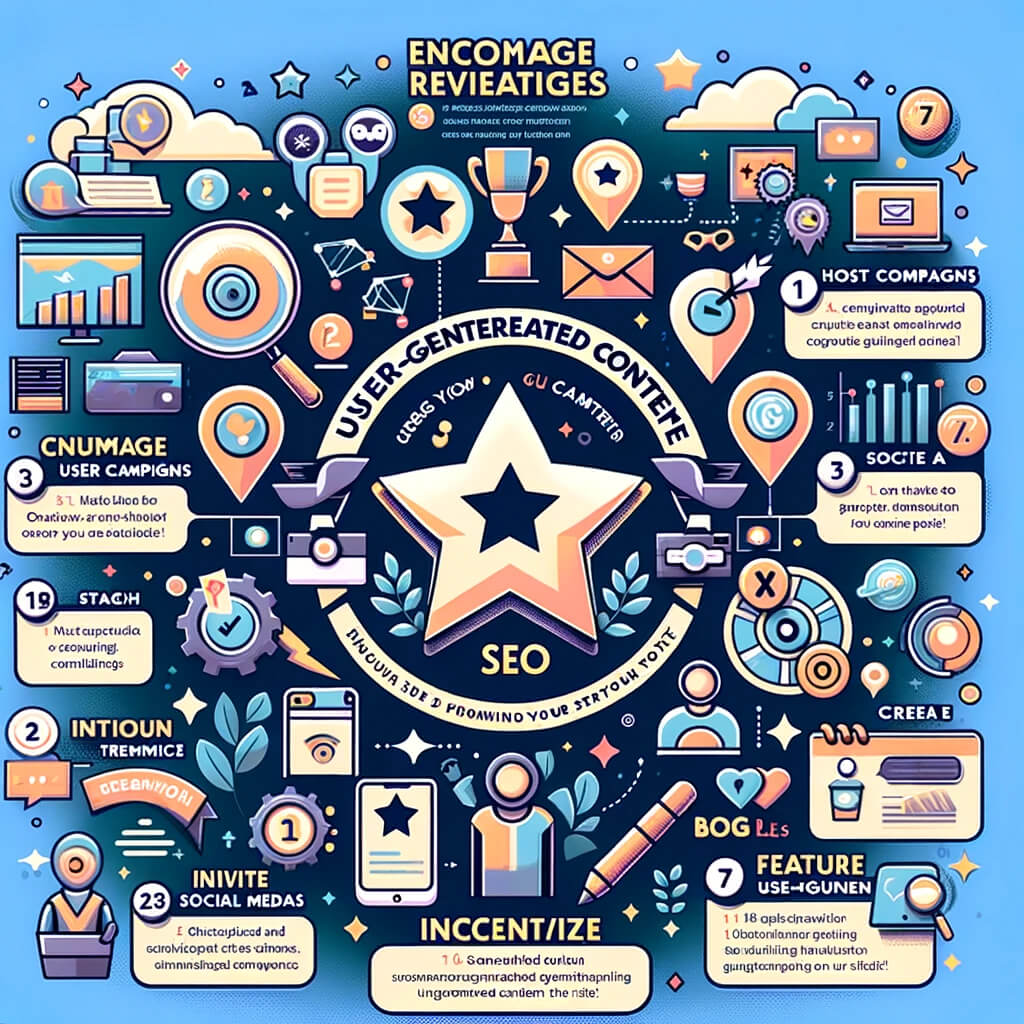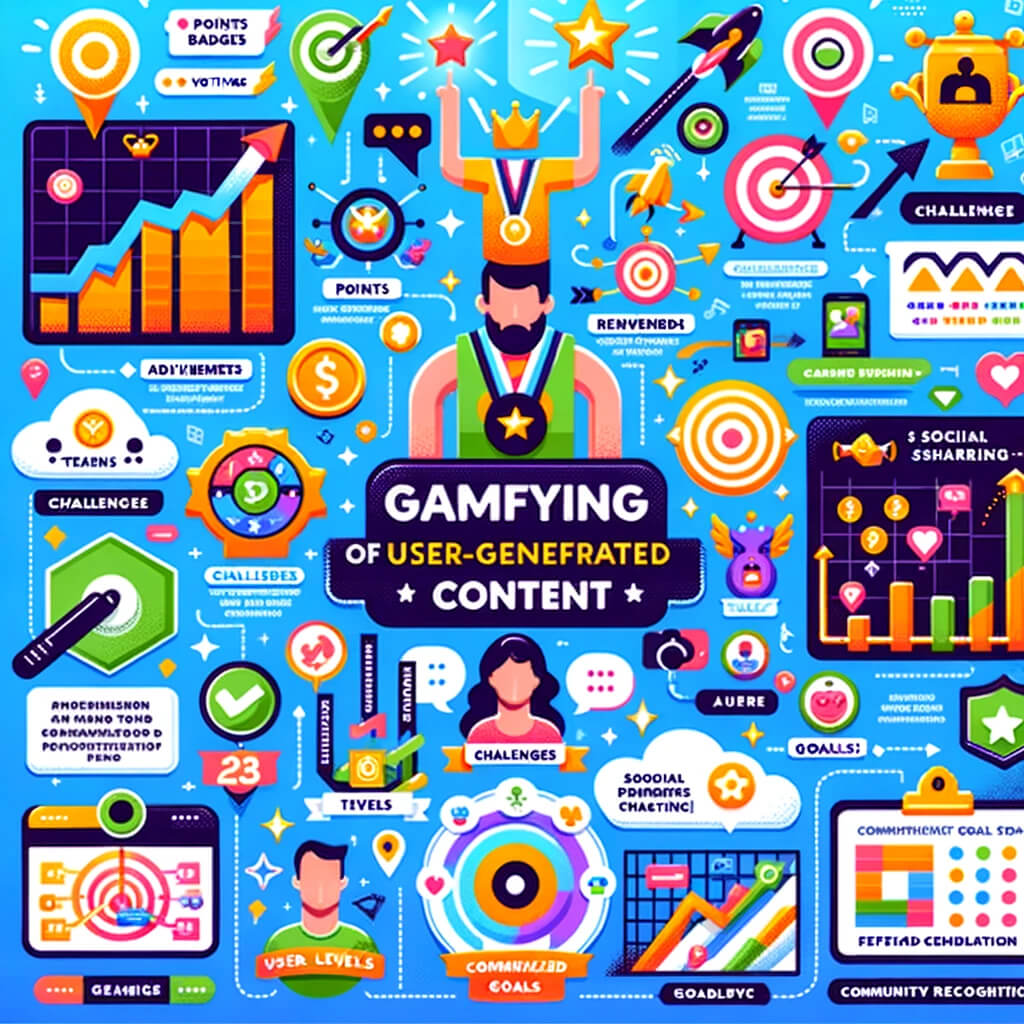How to use UGC for SEO?
Unlock the secret to boosting your SEO with the power of User-Generated Content (UGC)! Discover what UGC is, and how to use UGC for SEO through fresh content, valuable long-tail keywords, and increased content volume.
Learn strategic ways to harness UGC for creating external links, enhancing your branding, and employing seven effective strategies to not only enrich your SEO efforts but also engage and grow your online community.
Table of Contents
What is UGC?
UGC stands for User-Generated Content. It refers to any form of content—such as text, posts, images, videos, reviews, etc.—that has been created and shared by unpaid contributors or users of a platform.
This type of content can be found across various online platforms, including social media sites, blogs, wikis, and more.
UGC is significant because it allows regular users to express their creativity, opinions, and experiences, contributing to the diversity of content available online and influencing brands, products, and social trends.
It also plays a crucial role in marketing strategies, as authentic content from users can enhance brand trust and engagement.

Does UGC affect SEO?
Yes, User-Generated Content (UGC) can significantly affect Search Engine Optimization (SEO) in several ways:
- Fresh Content: Search engines like Google prioritize fresh, updated content. UGC, such as comments, reviews, and forum posts, can keep a website’s content dynamic and frequently updated, signaling to search engines that the website is active and relevant.
- Long-tail Keywords: Users often use natural, conversational language in their content, including long-tail keywords that your website might not otherwise target. This can help improve your site’s visibility for a broader range of search queries.
- Content Volume: UGC can significantly increase the amount of content associated with your brand or website, giving search engines more pages to index and more reasons to rank your site higher.
- Enhanced User Engagement: High-quality UGC can improve user engagement metrics, such as time on site and bounce rate, which are factors considered by search engines when ranking content. Engaging UGC encourages users to spend more time on your site, interacting with the content and navigating to other pages.
- Social Signals: UGC often includes social interactions, such as shares, likes, and comments, which can indirectly impact SEO. Although the direct impact of social signals on SEO rankings is debated among SEO professionals, they can increase visibility, drive traffic, and enhance brand reputation, all of which can contribute to better SEO performance.
- Backlinks: UGC, particularly in the form of blogs, forum posts, and social media content, can generate backlinks to your site if users reference your content elsewhere on the web. Backlinks are a crucial ranking factor for SEO, as they signal to search engines that other websites consider your content valuable and authoritative.
However, it’s important to manage and monitor UGC effectively to ensure it remains high-quality and relevant. Spammy or low-quality UGC can harm your SEO efforts, so implementing moderation policies and tools is essential to filter out undesirable content.

How to use UGC to create external links?
Using User-Generated Content (UGC) to create external links is a strategic approach that can enhance your website’s SEO, increase its visibility, and drive traffic. Here are several methods to leverage UGC for building external links:
- Encourage Reviews and Testimonials: Ask your customers to leave reviews or testimonials on their websites, blogs, or social media platforms, with a link back to your website. This not only provides valuable feedback but also generates external links and potential traffic.
- Host Contests and Giveaways: Run contests or giveaways where participants are encouraged to share your content or create their own related content on their platforms, with a requirement to link back to your website for entry validation. This can rapidly increase the number of external sites linking to yours.
- Feature User Content: Create a section on your website or a regular blog post series that features user content, such as case studies, success stories, or user-submitted tips. Reach out to the featured users and encourage them to share the link on their own websites and social media profiles.
- Create a Community Forum: By hosting a forum or a community platform on your site where users can discuss topics related to your industry, you can encourage content creation that others might reference in their content, creating natural backlinks.
- Leverage Social Media: Utilize social media platforms to share user-generated posts, stories, or tweets that mention your brand or use your products. Encourage users to include a link to your website in their content for more information or to access related products.
- Collaborate on User-Generated Guides or E-books: Collaborate with users or influencers to create guides, e-books, or resources that are valuable to your community. Users who contribute can link to these resources from their websites or social media platforms.
- Encourage Guest Posts: Invite your users or customers to write guest posts for your blog. Often, these contributors will share their guest articles on their own websites or social media channels, including a link back to their post on your site.
- Use Hashtags for Campaigns: Create unique hashtags for marketing campaigns and encourage users to create content around these hashtags on platforms like Instagram, Twitter, or TikTok. Then, feature this content on your website and ask the original creators to share this feature on their platforms, including a link to your site.
- Incentivize Link-Backs: Offer incentives for users who link back to your site. This could be in the form of discounts, access to exclusive content, or entry into a contest.
- Create a Badge or Award Program: Develop a badge or award that websites or bloggers can display if they meet certain criteria related to your brand or industry. These badges can link back to a page on your site explaining the award or partnership, generating external links.
For all these strategies, it’s essential to focus on creating high-quality, engaging content that users will naturally want to share and link to. Moreover, always ensure that the methods used to generate external links comply with SEO best practices and guidelines set by search engines to avoid penalties.

How does branding through UGC help SEO?
Branding through User-Generated Content (UGC) can significantly aid SEO efforts in various ways. UGC contributes to a brand’s online presence, engagement, and reputation, all of which are crucial factors in SEO. Here’s how branding through UGC helps SEO:
- Enhanced Content Diversity and Authenticity: UGC adds a layer of authenticity and diversity to your content strategy. Authentic content is more likely to engage users, keep them on your site longer, and encourage them to interact with your content. These positive user signals can boost your SEO rankings.
- Increased Keyword Coverage: Users often discuss products or services using natural language and may include keywords and phrases that you hadn’t targeted but are relevant to your brand. This broadens your keyword coverage, potentially improving your rankings for a wider array of search queries.
- Improved Social Signals: When users create and share content about your brand on social media, it generates social signals (likes, shares, comments) which, while not a direct ranking factor, indicate to search engines that your content is valuable and engaging. This increased engagement can indirectly improve your SEO by driving more traffic to your website and increasing its visibility.
- Creation of Natural Backlinks: High-quality UGC, such as reviews, blog posts, or videos, can lead to natural backlinks from other websites. These backlinks are a strong ranking signal to search engines, indicating that your site is a credible source of information or products.
- Increased User Engagement and Reduced Bounce Rate: Engaging UGC can keep visitors on your site longer and encourage them to explore more pages. Search engines use metrics like time on site and bounce rate as indicators of a site’s value for a given search query. Improved engagement metrics can lead to better SEO rankings.
- Local SEO Benefits: Reviews and local content created by users can significantly boost your local SEO efforts. Local keywords and mentions of neighborhood-specific features can help your business rank higher in local search results.
- Building Brand Trust: UGC helps build brand trust and loyalty, which can increase repeat visits to your site. Repeat traffic is another positive signal to search engines, contributing to higher rankings.
- Rich Snippets and Featured Content: Reviews and ratings from users can be marked up with schema.org tags on your website. This markup can lead to rich snippets appearing in search results (e.g., star ratings), which can improve click-through rates (CTR). A higher CTR can positively influence your SEO rankings.
To maximize the SEO benefits of branding through UGC, it’s essential to encourage the creation of high-quality content, moderate UGC to ensure it aligns with your brand values and implement proper SEO techniques, such as using appropriate keywords and meta tags in UGC posts and ensuring all user-generated web content is easily crawlable and indexable by search engines.

7 strategies create UGC for SEO
Creating User-Generated Content (UGC) strategically can significantly enhance your SEO efforts by increasing content volume, improving engagement, and expanding your reach. Here are seven effective strategies to encourage UGC that boost your SEO:
- Encourage Reviews and Ratings: Make it easy for customers to leave reviews and ratings on your website and third-party platforms (like Google My Business, Yelp, or industry-specific sites). Positive reviews can improve your local SEO and help your business appear more credible and attractive in search results. Use email campaigns, post-purchase prompts, and incentives to encourage more reviews.
- Host Contests and User Campaigns: Launch contests, challenges, or social media campaigns that encourage users to create content related to your brand or products. Ask participants to share their entries on their own social media platforms with specific hashtags, tagging your brand, or even submitting them directly on your website. This can generate a wealth of diverse content, from photos and videos to testimonials and blog posts.
- Leverage Social Media Platforms: Utilize social media platforms to encourage users to share stories, images, or videos that include your products or services. Create brand-specific hashtags for users to use, making it easier to find and feature their content on your own channels or website. Social shares and mentions can indirectly benefit your SEO by driving traffic to your site.
- Create a Community Forum or Q&A Section: Implement a forum or a Q&A section on your website where users can engage with one another, share experiences, and offer advice. Not only does this create a wealth of UGC, but it also helps to target long-tail keywords and can keep your website content fresh and updated—key factors in SEO.
- User-Generated Blog Posts: Invite customers, industry influencers, or even regular users to contribute blog posts to your website. This can provide unique perspectives and valuable content that attracts more visitors. Ensure you have editorial guidelines to maintain quality and relevance to your audience.
- Incentivize Check-ins and Social Mentions: Encourage users to check in at your location on social media platforms or to mention your brand in their posts by offering incentives like discounts, freebies, or entry into a giveaway. This can increase your brand’s visibility online and drive traffic to your site.
- Feature User-Generated Content on Your Site: Regularly feature UGC on your website, whether it’s a dedicated “Customer Stories” page, a “Photo of the Week” section, or incorporating user reviews and testimonials throughout the site. Highlighting this content not only provides fresh, SEO-friendly content but also encourages other users to contribute their own content in hopes of being featured.
For each of these strategies, it’s crucial to maintain quality control and ensure that the UGC aligns with your brand’s values and message. Also, engage with the users who contribute content by thanking them or featuring their content prominently. This not only encourages more UGC but also helps build a loyal community around your brand.

How to gamify the creation of UGC?
Gamifying the creation of User-Generated Content (UGC) involves incorporating game design elements into the process to motivate participation, enhance engagement, and encourage content creation by users.
This approach can significantly boost the volume and quality of UGC, leveraging human desires for competition, achievement, and social interaction. Here’s how to gamify the UGC creation process:
- Points and Rewards System: Implement a points system where users earn points for creating content, such as reviews, posts, videos, or photos related to your brand or products. Points could lead to rewards like discounts, exclusive access, or free products. This encourages continued participation and engagement.
- Leaderboards: Use leaderboards to showcase top contributors based on the quantity or quality of their content. This taps into the competitive spirit, motivating users to create more content to climb up the rankings. Ensure the criteria for the leaderboard are clear and fair to keep users engaged.
- Achievement Badges: Create badges or achievements for users to collect based on their activities. For example, award badges for the first submission, for submitting different types of content (text, photo, video), or for content that reaches a certain popularity (likes, shares). This variety encourages users to explore different ways of contributing.
- Challenges and Contests: Organize periodic challenges or contests that prompt users to create content around specific themes, using particular products, or within certain time frames. Offer enticing prizes for the best entries, and use a panel of judges or community votes to determine winners, adding a competitive and social layer.
- User Levels or Tiers: Implement a tier system where users can level up based on their contribution levels. Higher tiers could unlock special privileges, such as early access to products, VIP support, or influence over future products or services. This system rewards loyalty and continuous engagement.
- Social Sharing and Voting: Encourage users to share their content on social media and within the community platform itself. Incorporate voting mechanisms for the community to select their favorite pieces of content, which could influence rewards or recognition. This adds a social dimension, increasing content visibility and participation.
- Personalized Goals and Challenges: Offer users personalized goals or challenges based on their previous interactions and contributions. For instance, if a user frequently submits photos, challenge them to submit a video for extra points. This personal touch can motivate users by catering to their interests and encouraging them to stretch their creativity.
- Feedback and Progress Tracking: Provide users with feedback on their contributions and a way to track their progress toward rewards or achievements. This can be through direct comments, likes, or a dashboard showing their points, level, and next milestones. Feedback encourages improvement and continued participation.
- Community Recognition: Feature outstanding contributions prominently on your website, social media, or newsletters. Recognizing users publicly not only rewards them but also shows the value you place on community content, encouraging others to contribute.
When gamifying UGC creation, it’s essential to maintain a focus on the quality of content, not just the quantity. Clear guidelines should be established to ensure that the content being produced is relevant, appropriate, and valuable to the community.
Additionally, ensuring fairness and transparency in how points, rewards, and recognition are awarded is crucial to maintaining trust and engagement in the long term.

Conclusion
In conclusion, leveraging User-Generated Content (UGC) offers a multifaceted advantage for enhancing SEO, driving brand engagement, and fostering a vibrant online community.
Through strategic initiatives that encourage reviews, social media interactions, and content contests, businesses can significantly improve their search engine rankings, attract more organic traffic, and build a loyal customer base.
By embracing UGC, brands not only capitalize on authentic and diverse content but also create a dynamic online presence that resonates with audiences and bolsters SEO efforts in the ever-evolving digital landscape.


